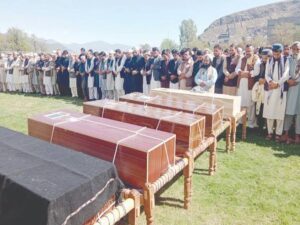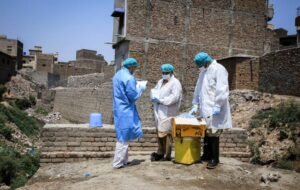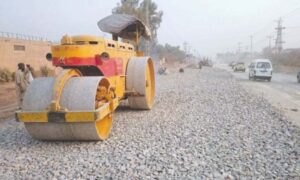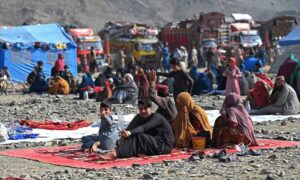PESHAWAR – In the northern reaches of Pakistan, the mountains hold secrets that could fuel an economic transformation. Beneath the ground lies some of the world’s richest deposits of marble and granite, their untapped reserves offering a promise of prosperity that the region desperately needs. But even as industry insiders see wealth in the hills, the road to realizing this potential remains as treacherous as the paths winding up to the quarries.
Decades-old obstacles stand in the way. Security issues, outdated mining techniques, and bureaucratic red tape prevent these mineral-rich landscapes from transforming into economic lifelines. For Khyber Pakhtunkhwa burdened by poverty and political instability, Marble and Granite reserves offers a glimmer of hope. Yet, without investment and reform, this potential remains unfulfilled.
Despite these challenges, the industry has seen explosive growth since the 1990s. From a modest six factories, KP and it’s tribal districts now host approximately 1,700 marble processing units, creating direct employment for 100,000 people and indirectly supporting another 600,000. For many families, this work provides a vital economic lifeline, as the factories collectively generate millions of rupees in annual revenue. The surge in demand has been especially pronounced since 2000, with about 30-40% of production being exported to Afghanistan, while the rest feeds a thriving domestic market.
But these economic gains are fragile. The marble sector has been deeply scarred by years of conflict and political unrest. In Buner, one of the key marble-producing districts, around 500 factories were shuttered during the 2009 military operations, leaving 200,000 people without work. Factory closures, curfews, and destroyed supply chains caused billions of rupees in losses, with some businesses never reopening. Although the region has since experienced periods of relative calm, power shortages and bureaucratic inefficiencies continue to haunt the industry. Frequent load-shedding, low voltage, and the scarcity of live ammunition—essential for quarrying—mean that production often stalls, forcing some factories to close.
At the same time, navigating the bureaucracy remains a formidable task. Investors frequently find themselves enmeshed in a tangle of government regulations, with permissions required from multiple agencies, including the Sarhad Development Authority (SDA) and the Federal Board of Revenue (FBR). Adding to the frustration, the provincial Environmental Protection Agency (EPA) has barred new marble factories from certain industrial areas, dampening the region’s investment appeal. “Around 75% of our time is spent dealing with government departments,” said a marble industrialist in KP. “There’s just no clarity in the system.”
The region’s marble potential, however, is undeniable. The hills of Swat, Buner, and Chitral yield beautiful varieties, from Ziarat white to the unique golden marble. These natural resources, spanning 30 distinct types of marble and granite, lie in clusters across KP, from Swat and Buner to Mohmand and Khyber. Each site holds a unique aesthetic value and economic potential that could catapult Pakistan into a prominent position in the international marble industry.
To harness this potential, the government launched the Pakistan Stone Development Company (PASDEC) as a nonprofit under the Companies Ordinance of 1984. PASDEC’s mandate includes modernizing quarrying practices and minimizing waste, with the current extraction process reportedly losing about 85% of marble to waste. This loss, industry insiders say, is a missed economic opportunity that could have generated foreign exchange and domestic revenue. PASDEC has set a goal to boost Pakistan’s exports to $2.4 billion, but its ambitions hinge on political stability and an improved investment climate.
For now, the potential of KP’s marble reserves remains largely theoretical. On the ground, miners grapple with outdated tools, and investors struggle with the pervasive inertia of bureaucracy. If the region can overcome these hurdles, the promise of prosperity may no longer be just a dream embedded in the mountains.












